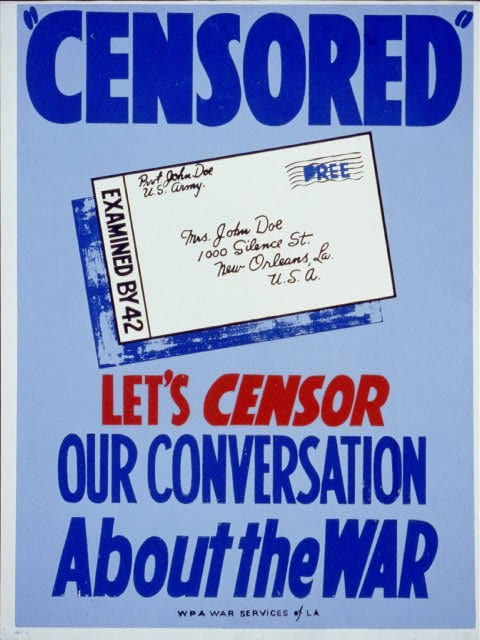Exhibit
Why do people censor? For ambition? Profit? Fear? This exhibit in the University of Chicago’s Special Collections Research Center traces censorship from antiquity to our digital age, showing how information control has worked, thrived, or failed, and how real censorship movements tend to be very different from the centralized, methodical censorship depicted in Orwell’s Nineteen Eighty-Four. From indexes of forbidden books to the subtle censorship of teaching biased histories, the materials in this exhibit will challenge you to answer: how do you define what is and isn’t censorship?
A full color catalog of the exhibit, over 200 pages, is available for free from University of Chicago’s Special Collections Research Center. To request a copy by mail, please contact the assistant curator Julia Tomasson. Many thanks to the University of Chicago Institute on the Formation of Knowledge, and to our Kickstarter Backers, whose support made the catalog possible.

Sections of the Exhibit Include:

Censorship and Information Control: A Global History from the Inquisition to the Internet
September 17, 2018 – December 14, 2018, Special Collections Research Center (Regenstein Library)
Hours: Monday through Friday 9 AM to 4:45 pm. When classes are in Session, Tues & Weds 9 am to 5:45 PM.
The exhibit is open to the public, and a printed exhibit catalog is available for free to all visitors. If you cannot make it to Chicago for the exhibit but are interested in the catalog, contact us to request one, or you can receive one as a thanks for backing our Kickstarter, to help fund the speaker series and catalog production.
Want to bring a group to the exhibit? Contact Ada Palmer to request a curator tour.
See examples of the objects displayed in the exhibit on our gallery page.
The Exhibit Team
- Curator: Ada Palmer
- Assistant Curator: Julia Tomasson
- Art Curator: Samantha Truman
- Exhibit Designer: Patti Gibbons
Many components of the exhibit were team curated by graduate and undergraduate students in a 2017 course “History of Censorship and Information Control” co-taught by Ada Palmer and Stuart McManus with the help of John-Paul Heil. Student curators: Adam Biesman, Julian Borda, Peter Chen, Anna Christensen, Timothy Cunningham, Hannah Dorsey, Nathaniel Eakman, Jamie Ehrlich, Max Freedman, Sam Gersho, Henry Hahn, Carolyn Hirsch, Michael Hosler-Lancaster, Caitlin Hubbard, Sam Koffman, Clio Sophia Koller, Sarah Larson, Jillian Lepek, Gautama Mehta, Jasmine Mithani, Morley Musick, Olivia Palid, Lauren Scott, Kyle Shishkin, Katherine Surma, Julia Tomasson, Hannah Trower, Samantha Truman, Augustin Vannier, Julia Walker, Peyton Walker, Caleb Wang, and Victoria Xing.
With special thanks to librarians Catherine Uecker and Sem Sutter, and to Leo Cadogan, Cheryl Cape, Kyong-Hee Choi, Cory Doctorow, Adrian Johns, Mack Muldofsky, Lauren Schiller, and Jo Walton.
Made possible by projects supported by the University of Chicago Institute on the Foundation of Knowledge, and the Neubauer Collegium. Thanks also to the American Library Association Office of Intellectual Freedom, the Electronic Freedom Foundation, and the Comic Book Legal Defense Fund. Catalog printing by Swift Impressions.
Explore the Exhibit
See more books and documents in our Digital Gallery.

















